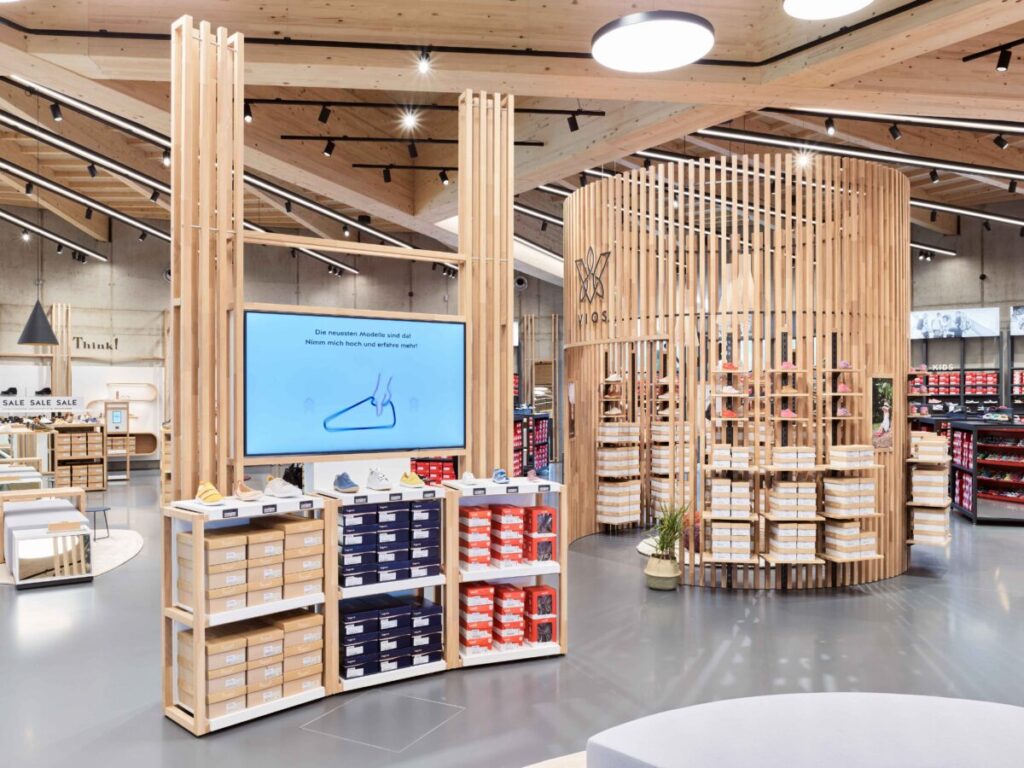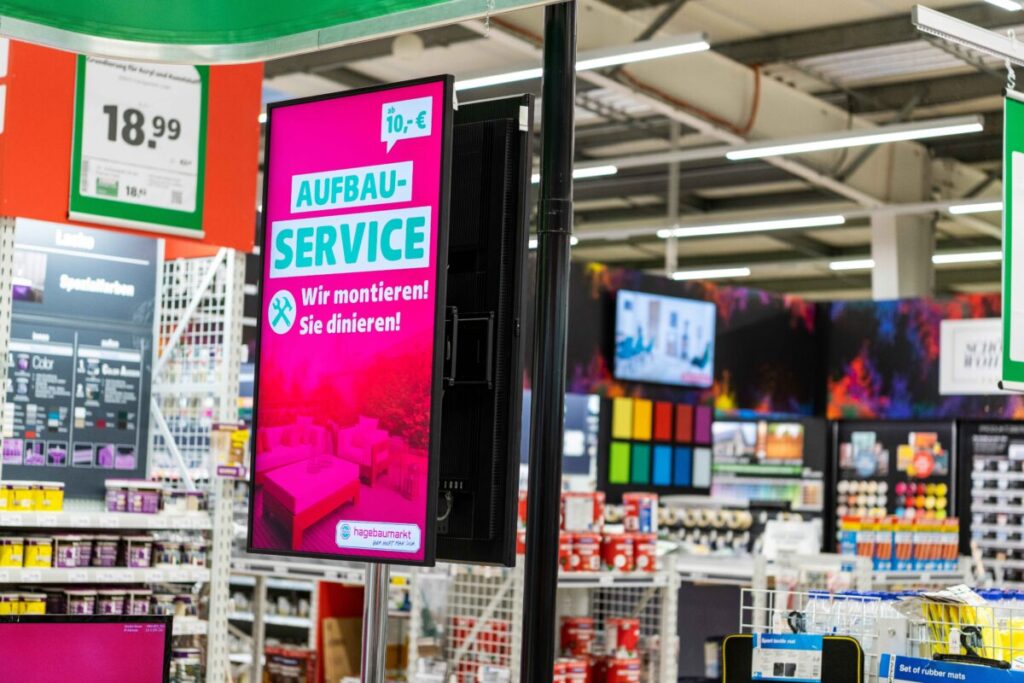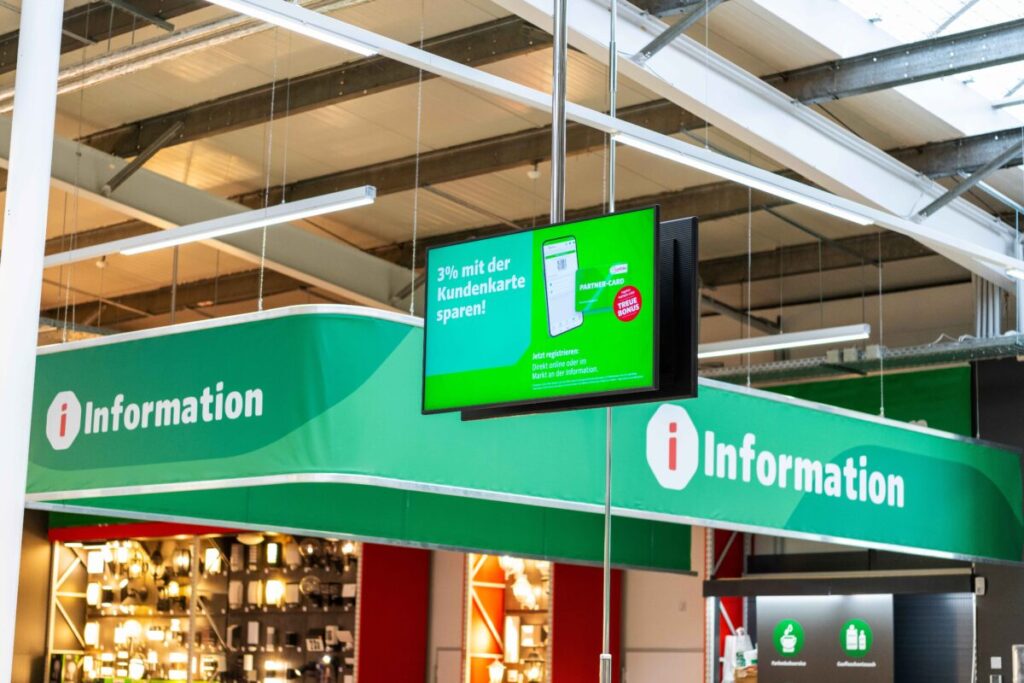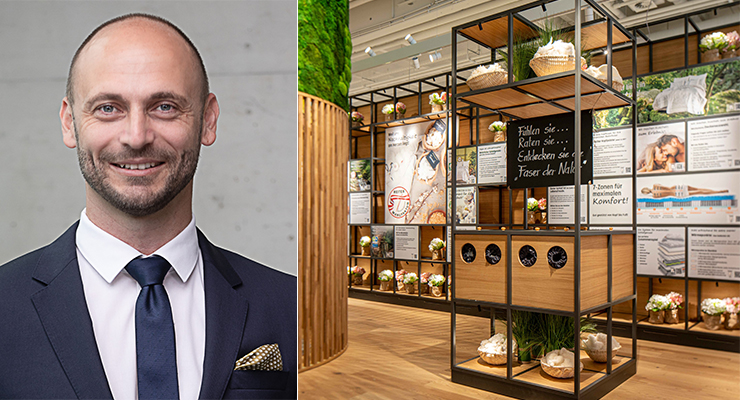It sounds like something out of a science fiction movie, but it’s not as far from reality as you might think – at least in theory. The shopping experience is constantly being redefined by many technological developments, as is the question of what makes a successful store.
Traditionally, success at the point of sale has been measured by economic indicators such as tales or average basket value. These metrics remain important, as a store must be economically viable to survive. However, success is now also gauged by the perception of the store, the retailer, and the brand. The overall shopping experience has become a critical success factor.
The ultimate goal for any retailer must be to have as many ambassadors as possible – individuals who identify with the brand and share their enthusiasm with others. It’s about making people feel at home with both the retailer and the brand, not just physically but emotionally, and encouraging them to share their positive experiences. These brand ambassadors are crucial to brand development and contribute significantly to its success.
Experience is difficult to measure. However, it can be defined on the basis of individual measurable
factors. One indicator, for example, is the return rate – how often people return to a store because it offers an appealing experience. Long dwell times and customer loyalty longevity are other experiential success factors at the point of sale.
A FEAST FOR THE SENSES
Shopping is a sensory experience, especially in brick-and-mortar retail. To enhance the customer experience, retail spaces need to offer multi-sensory solutions that are appropriate to the shopping situation. This can vary from sector to sector and can range from simple product tasting in food retail to the use of digital solutions and exclusive events. “The sensory experience can take many different forms, and increasing digitalization has contributed significantly to the creation of new opportunities,” explains Bernd Albl, Managing Director Digital Solutions at umdasch The Store Makers.
Gamification and active visitor engagement are strong drivers of multi-sensory experiences, and their importance has grown significantly in recent years. Even simple solutions can add a lot of value. “The range of possibilities is very wide. A classic example would be a touchscreen in a shop,” Albl continues. With Lift and Learn technology, it is also possible to display information on a screen as soon as a customer picks up a particular product. The Smart Bakery Box, another umdasch The Store Makers product, not only engages customers but also stimulates their sense of smell with the aroma of freshly
baked goods – a sales effect that should not be underestimated in food retail. Intelligent software
works in the background to automatically set processes in motion. The goal is to ensure that supply and demand are always optimally matched.
In recent years, the multi-sensory space has evolved into a phygital-sensory space, with a mix of physical and digital elements. This means that customers are no longer approached anonymously, but are involved in the experience on an individual basis. This allows for a more personalized approach, with offers tailored to the customer’s needs and preferences.


FINDING A BALANCE IN THE DESIGN OF THE EXPERIENCE
Too many stimuli can overwhelm customers. The key is to strike a balance and avoid overstimulation. This is exactly what the use of retail media is all about. Advertising at the point of sale has enormous potential and is a rapidly growing additional revenue channel. In this context, the interconnectedness of channels is more important than ever, as this is what makes a holistic brand experience possible. It is crucial that retail media is subtly and aesthetically integrated into the big picture. Beautiful store design is always a symbiosis with interior architecture. Only when the two are in harmony can a harmonious whole be created.
The same applies to advertising and digital content, which can easily become distracting. It’s a matter of creating the right mood and matching the content to the space. A harmonious example would be a car ad in a bank that offers car financing. If the content also matches the bank’s brand design, the interaction is perfect. With the so-called Dealer App, umdasch The Store Makers has developed a software solution that helps retailers to do just that. “Thanks to ready-made templates, advertising can be prepared professionally in just a few simple steps. This is a huge advantage for retailers, especially those with extensive store networks, as demonstrated by its use at Circle K and hagebau,” says Albl.
The use of artificial intelligence (AI) can also help to increase the experiential value of retail media – provided it is strategically placed on the sales floor.


Especially advertising and digital content can easily become distracting. The so-called Dealer App offers a software solution that helps retailers with advertising that matches the content of the store like this example of hagebau shows.
ARTIFICIAL INTELLIGENCE UNLOCKS NEW POTENTIAL
Overall, AI will enable retailers to tailor their offerings and in-store experiences even more closely to individual customers and situations. AI is also a huge help to retailers, particularly when it comes to process optimization, and can make a significant contribution to procurement, automated processes, and in-store optimization. By analyzing customer data, AI can make predictions and recommendations that not only enhance the shopping experience, but take it to a whole new level. For example, AI can make personalized product recommendations based on previous shopping behavior or suggest suitable promotions.
Additionally, AI-assisted stock optimization solves a problem that has often been a challenge in brick-and-mortar retail, especially in the grocery sector: ensuring that goods are available in the right place, at the right time, and in the right quantity. This helps eliminate customer waiting times and prevents lost sales due to out-of-stock items.
THE POWER OF DATA
As the point of sale becomes increasingly digital, data and its analysis play a more critical role. Retailers naturally want to know where there is potential for improvement, especially when it comes to providing the best possible shopping experience for their customers. However, one question remains: What data is relevant and how it should be collected? While optical sensors, for example, can differentiate between people by age or gender, there are also radar sensors, which are currently in high demand, that can use motion tracking to identify visitor flows and hotspots in the store. These provide more discreet data without invading customer privacy.
Footfall in front of the store is a parameter that is often analyzed, as retailers use it to determine their own attractiveness to passers-by. It is not only interesting to see how many people enter the store, but also how long they stay in front of it, for example, to look at the shop window. “Smart Tracking makes it possible to see where most visitors are in the store and how long they stay there. This makes it possible to establish correlations with the purchase or non-purchase of products,” summarizes Albl.
According to Albl, the analysis and interpretation of data is crucial. This is where the biggest mistakes can be made, which, in the worst case, can negatively impact the shopping experience and, consequently, the success of a store. The following example illustrates this point: Thanks to smart tracking, a retailer can see that an area of its jeans store is very popular, but the products there are not selling very well. However, this information alone could lead to the wrong conclusions. A closer look reveals that only extreme sizes are being displayed, leading to the low sales. Even though the tracking shows good traffic in the area, using the data correctly is essential – otherwise, the retailer might mistakenly remove the products from the range.
THE FUTURE OF THE SHOPPING EXPERIENCE
The evolution of artificial intelligence will continue to be one of the major themes of the future when it comes to exceptional shopping experiences – towards more personalization and more automation. A seamless shopping experience will be the norm in the future. Customers will be able to switch between online and offline channels at will, with all the steps in the purchase process eliminated thanks to data transfer. “In particular, habitual purchases – everyday routine purchases – which are often made under time pressure and with as little effort as possible, can take on a whole new significance and a much more positive image thanks to intelligent digital solutions and the use of AI,” says Albl, looking to the future.
A successful shopping experience goes beyond merely selling products. Ideally, it fosters a sense of community. This can be achieved through events, workshops, and other activities that invite customers into the store and give them the opportunity to network, share ideas, and get to know the products in a new environment. Not only does this build customer loyalty, but it also creates dedicated brand ambassadors who carry the brand experience out into the world. And, it’s a testament to the fact that the shopping experience is the new success factor at the point of sale.

Bernd Albl
Bernd Albl, Managing Director Digital Solutions at umdasch The Store Makers.







